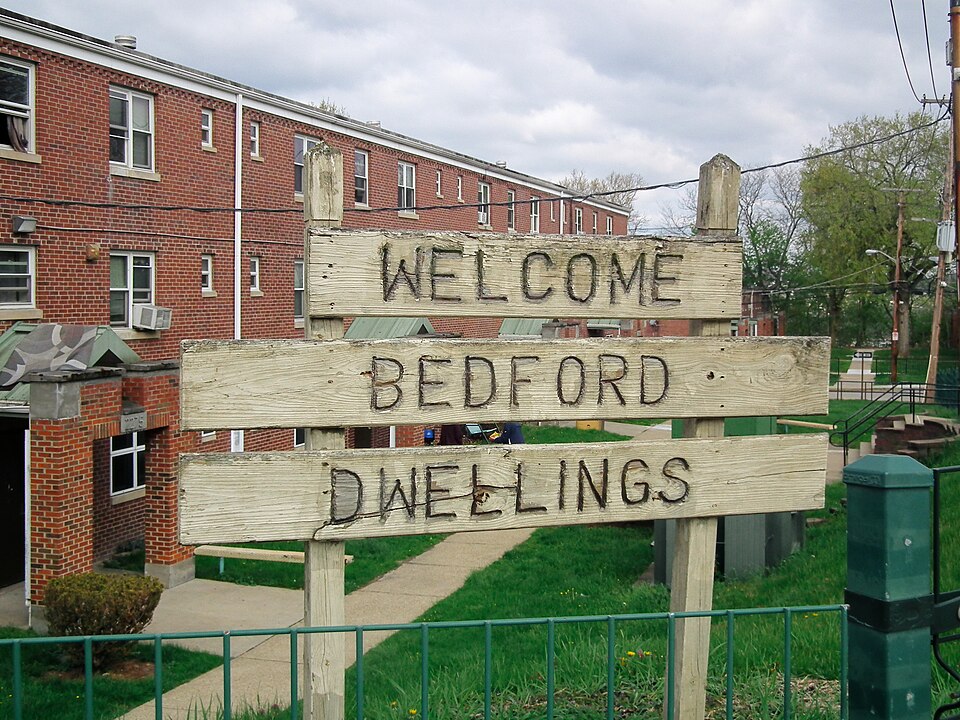
Welcome to the projects.
Do you know what happens if you walk into the projects with a camera?
Well, people walking past smile and say “good morning,” because this is Pittsburgh, and that’s what we do.
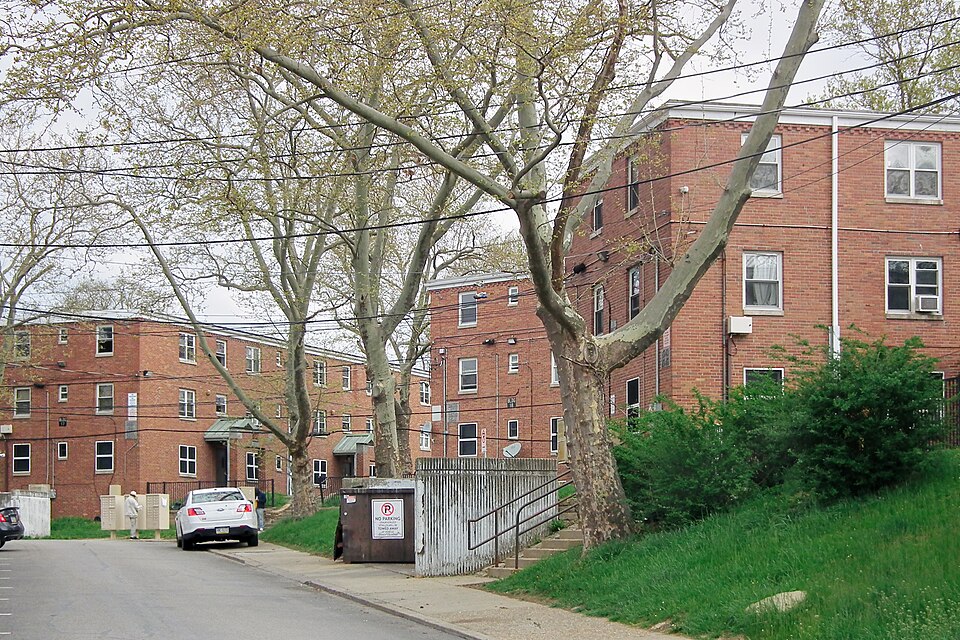
At Wikimedia Commons, where Father Pitt donates all his pictures, another Commons user asked him as a favor to get some pictures of the Bedford Dwellings, because they are scheduled to be demolished when their replacements are finished, and there were no current pictures of them in Commons. So of course old Pa Pitt was out there the very next morning, because these are historic buildings whose memory should not be lost.
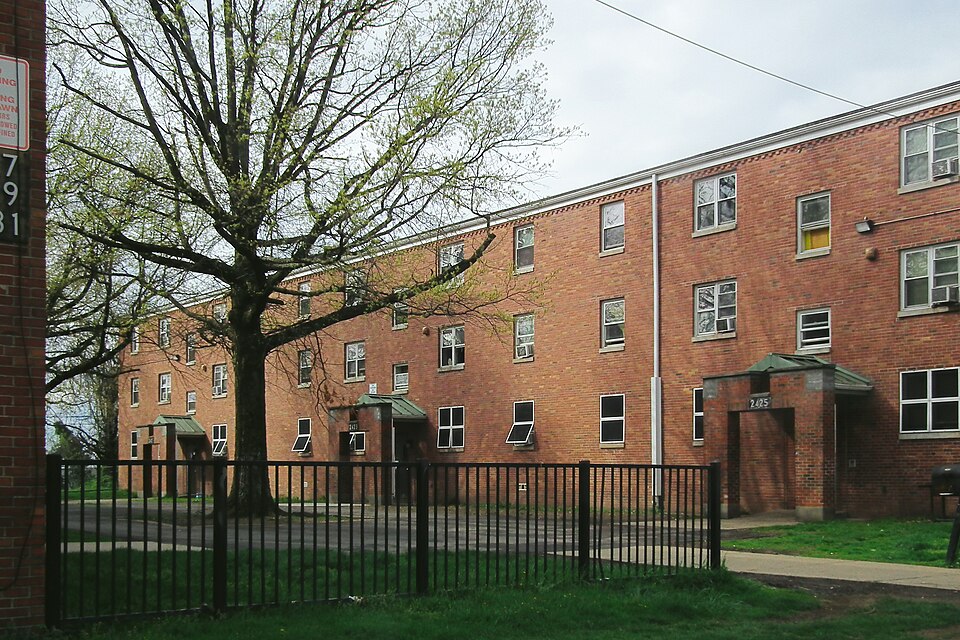
Suburbanites seem to be terrified of the “projects”—the public-housing developments for poor people in the city. Old Pa Pitt is not going to tell you that the projects are dens of luxurious living, or that it is always an easy thing to raise a family there. But these buildings are better maintained than many suburban apartment complexes, and they are filled with people who care about their community and try to be good neighbors to one another.
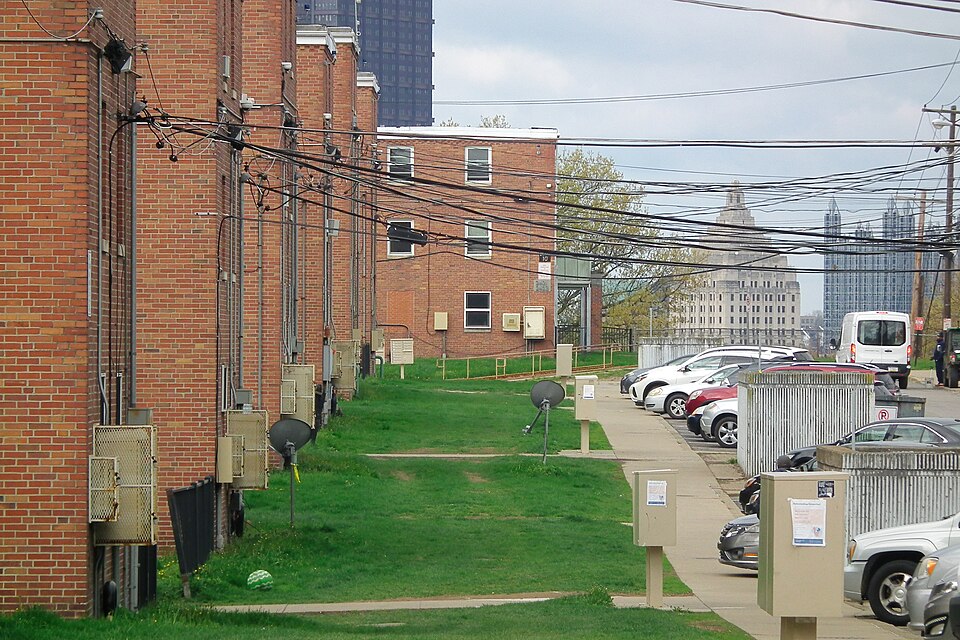
The Bedford Dwellings, built in 1939, were one of several New Deal housing projects in Pittsburgh. The architects were an all-star cast (and Father Pitt has no idea how they sorted out the work among themselves): Raymond Marlier, who designed Western Psych and several buildings at Kennywood; Bernard Prack, an expert in large industrial projects and worker housing; Edward B. Lee, architect of several tony clubs and the Chamber of Commerce Building downtown; and the venerable William Boyd, who was already architecting when the others were in kneepants. For this project they adopted a modernist simplicity that, in Father Pitt’s opinion, makes the development look like a barracks. But many expensive suburban apartment complexes adopted the same look at the same time.
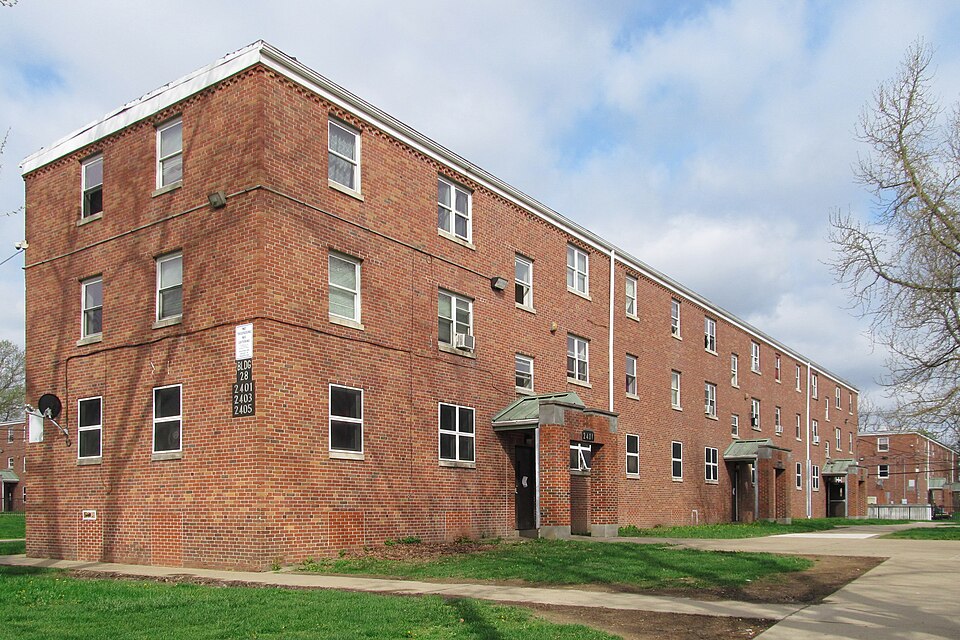

The idea behind the projects was to get poor people out of the awful “slums” and into decent housing, which would give them an opportunity to improve themselves.
Now, in old Pa Pitt’s opinion, much of the thought behind the projects was misguided. The slums they replaced might have been unsanitary and crowded, but they were alive. They had corner stores and bars and synagogues and churches and all the things that make a neighborhood a neighborhood. In contrast, the projects were just warehouses for people. They did have a community center and a recreation area, but they organized the life out of the community.
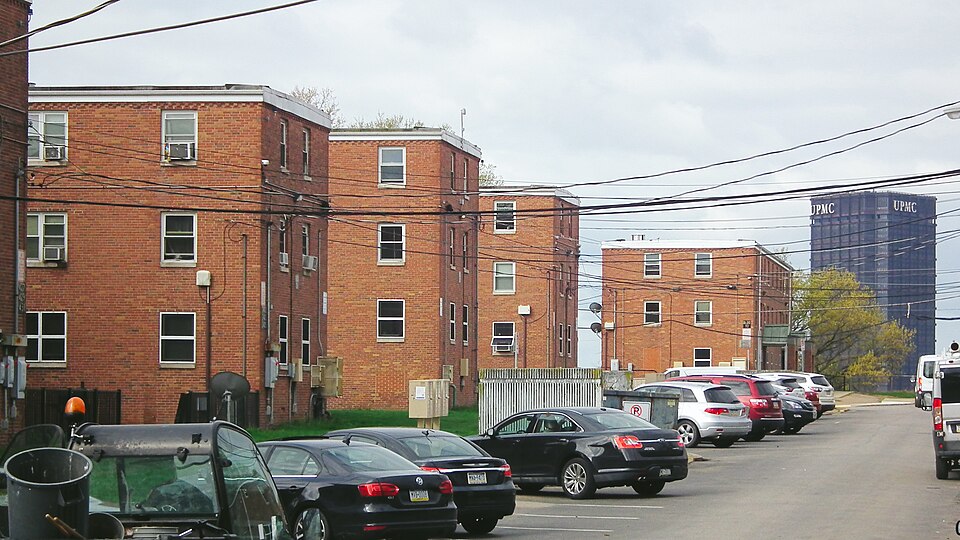
Before we think bad thoughts about the planners, the architects, and everyone else involved, let us recall that this was the modernist ideal for everyone. It was not just that the poor should be warehoused in barracks. Le Corbusier proposed leveling the whole city of Paris and installing everybody in identical apartment towers—and Le Corbusier was and still is the idol of the modernists. These housing projects, as we mentioned, are hard to distinguish from many profit-making suburban apartment complexes of the same era.
In other words, the people who planned the Bedford Dwellings were trying, in good faith, to give people who were otherwise too poor to afford decent housing the best modern thought could offer them. The poor were to be upgraded to the living standards of the modern middle class.
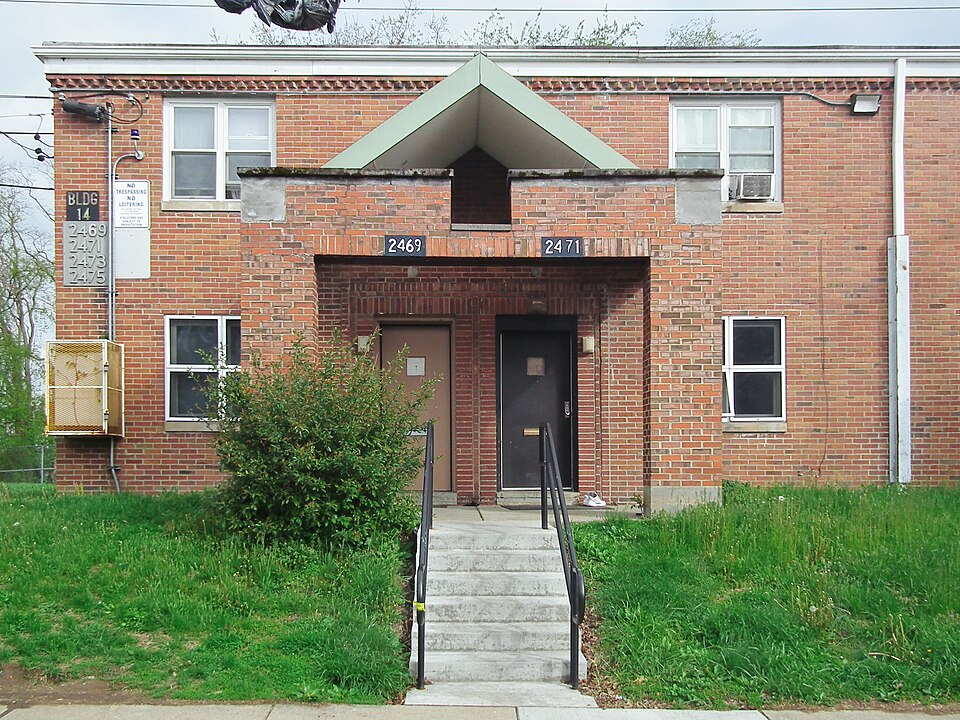
Nor were the housing projects built to weed out undesirable races. In fact, the projects were integrated from the beginning.
In The Negro Ghetto, a 1967 book by Robert Clifton (New York: Russell & Russell), the Housing Authority of Pittsburgh was singled out as an organization with enlightened ideas.
Whenever there is an activity sponsored by the Authority, it must be open to all ethnic groups, and whenever an activity is sponsored by a municipal or community agency, the Authority also insists that there be no racial segregation. [Page 184.]
Public-housing projects in Pittsburgh were never segregated deliberately. The administrator of the Housing Authority (quoted in that same book) explained the policy thus:
The general policy concerning occupancy is that the Housing Authority of the city of Pittsburgh will not, except for extremely compelling reasons, or reasons outside its own control, change the racial proportions of the large community in which any project may be built. However, the radius of such a community, and, therefore, the number of inhabitants that should be considered have never been precisely defined. [Page 185.]
By 1967 the Hill was mostly Black, and therefore the population of the Bedford Dwellings was also mostly Black—but not exclusively. Other projects in the city had populations that reflected the neighborhoods around them, so that some were majority Black and others majority White, and at least one almost precisely fifty-fifty. Not one of the eight major projects in the city was racially monolithic.

But what of the Bedford Dwellings’ effect on the neighborhood? Well, they killed it. The Engineering News-Record for October 25, 1951, reported that more than 7,800 buildings had been demolished in Pittsburgh in the previous fifteen years. “The peak year was 1939, when 1,208 buildings were torn down, 670 of them to make way for the first three public housing projects, Bedford Dwellings and Terrace Village Nos. 1 and 2.”
In the National Association of Housing Officials’ Housing Yearbook for 1939, we read, “Some three months were required to relocate the families from the Bedford site. Of the 160 families removed, 83 per cent were Negroes.” So 160 families—which could easily add up to a thousand people—had three months to pack up their entire lives and get out of their vanishing neighborhood.
Ideas have changed, and Father Pitt thinks they have changed for the better. These days, planners try to integrate their low-income housing projects into the neighborhoods by creating urban streetscapes, by fitting the architecture with the buildings around it, and by breaking down the barriers that isolate and define the “projects.”
One thing hasn’t changed. The decisions are still being made by middle-class bureaucrats who know what’s good for poor people. They probably have better ideas than they had in the 1930s, but no one says, “Let’s ask the residents what they think we should do, and then do that.” There will be community meetings and surveys and all that kind of thing, and residents will spend hours making their views heard, and in the end the people who know best will do what they know is best.
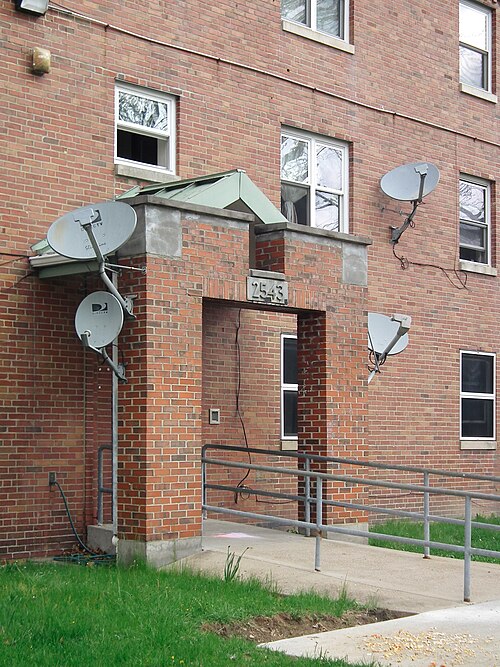
But let us remember the Bedford Dwellings with an honest appreciation of their faults and their virtues. They made an urban neighborhood into a sterile suburb. But they also formed a community. They kept their promise of decent, sanitary housing for people who needed it. In spite of their historic importance, Father Pitt is willing to agree that it is time to let them go. But if they were not all good, they were not all bad, either. Let these pictures remain as a memorial to the Bedford Dwellings as they were when they were in good shape and still inhabited, and to the generations of people who lived their lives there, and even to the middle-class bureaucrats who honestly wanted everybody to have a chance at a decent home and worked hard to make that possible.
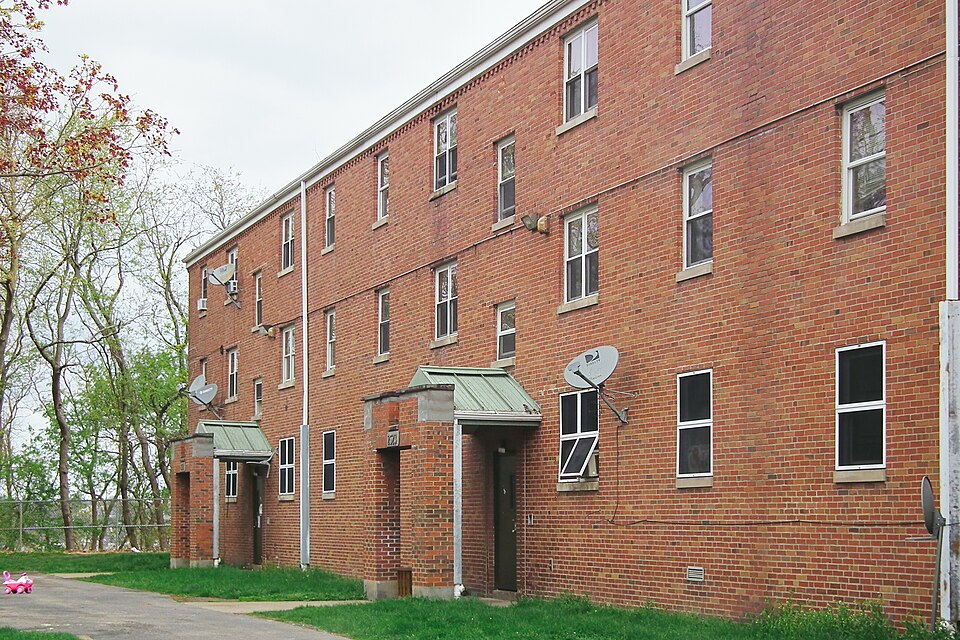
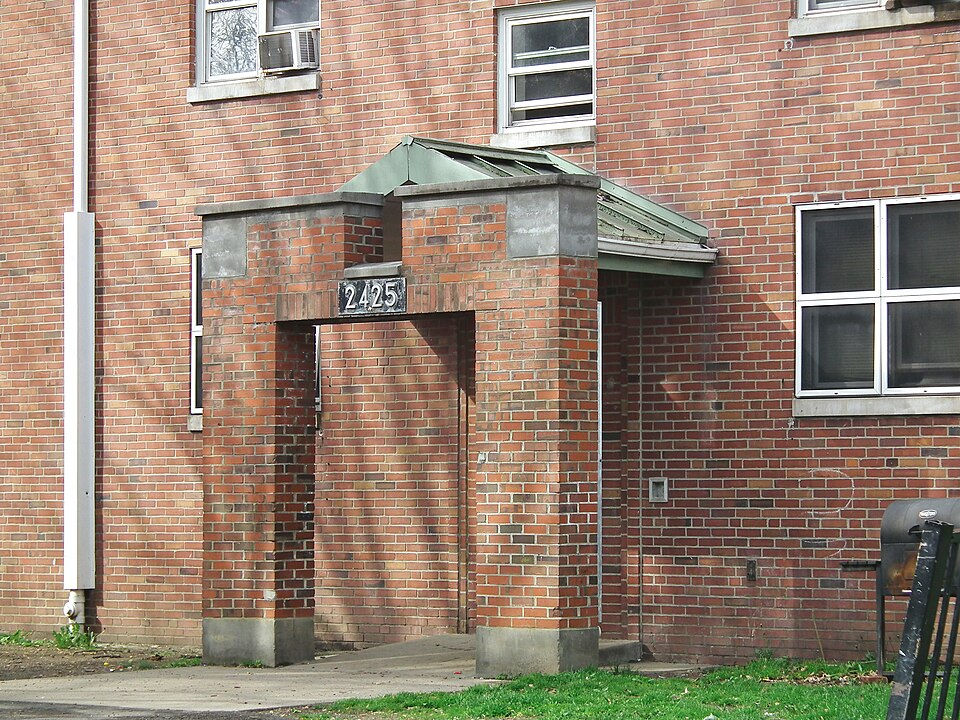

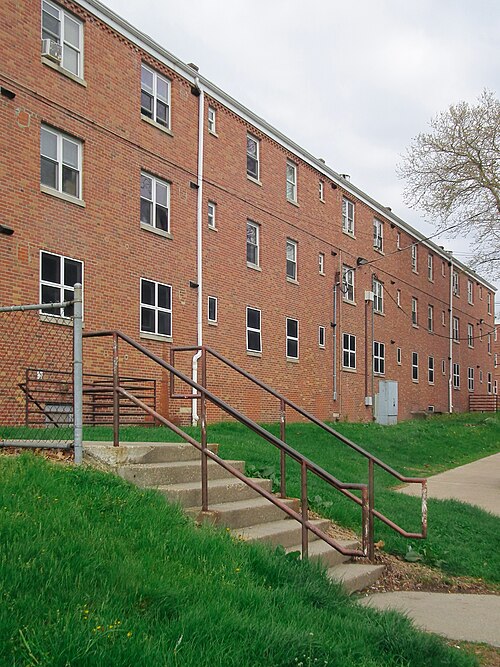
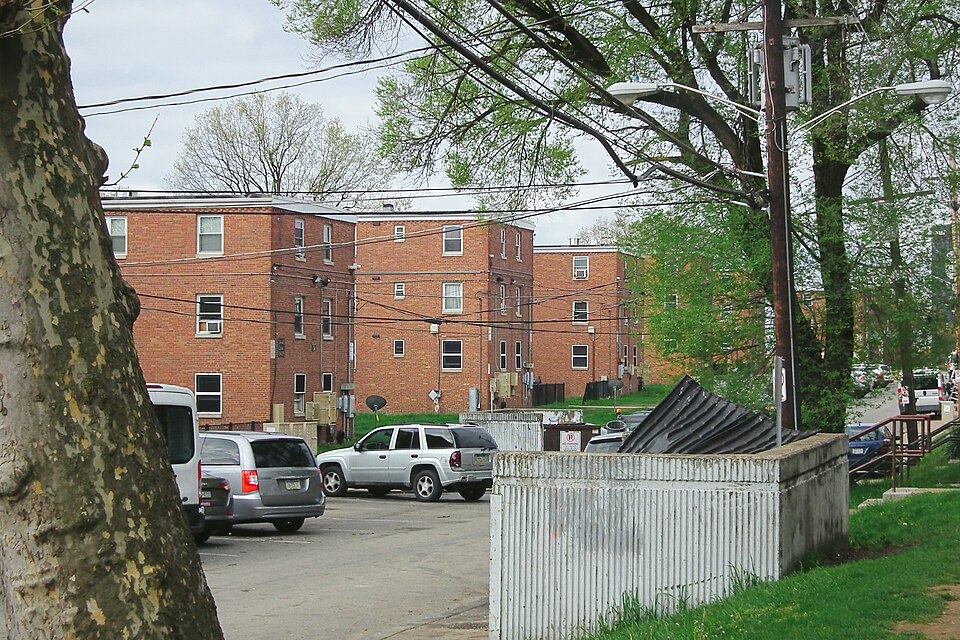
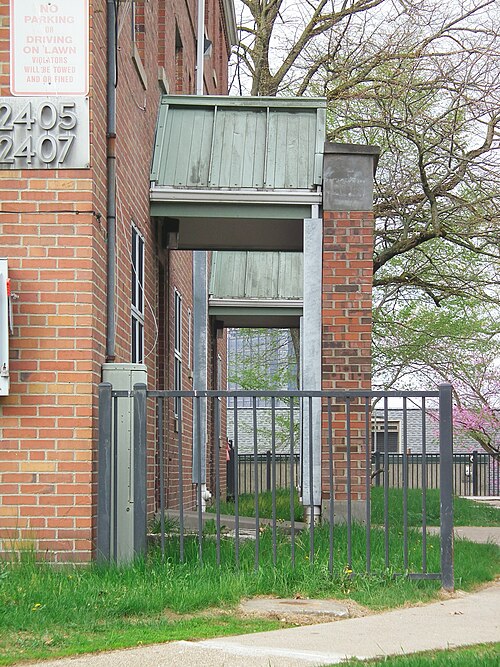

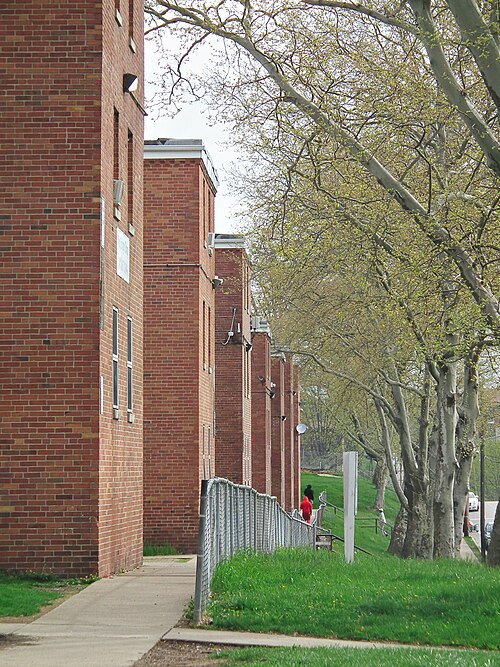
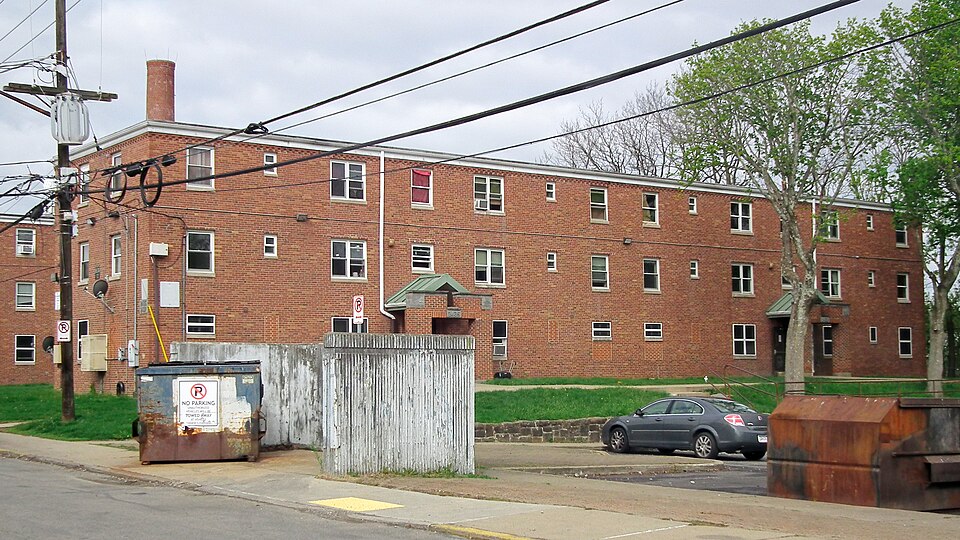
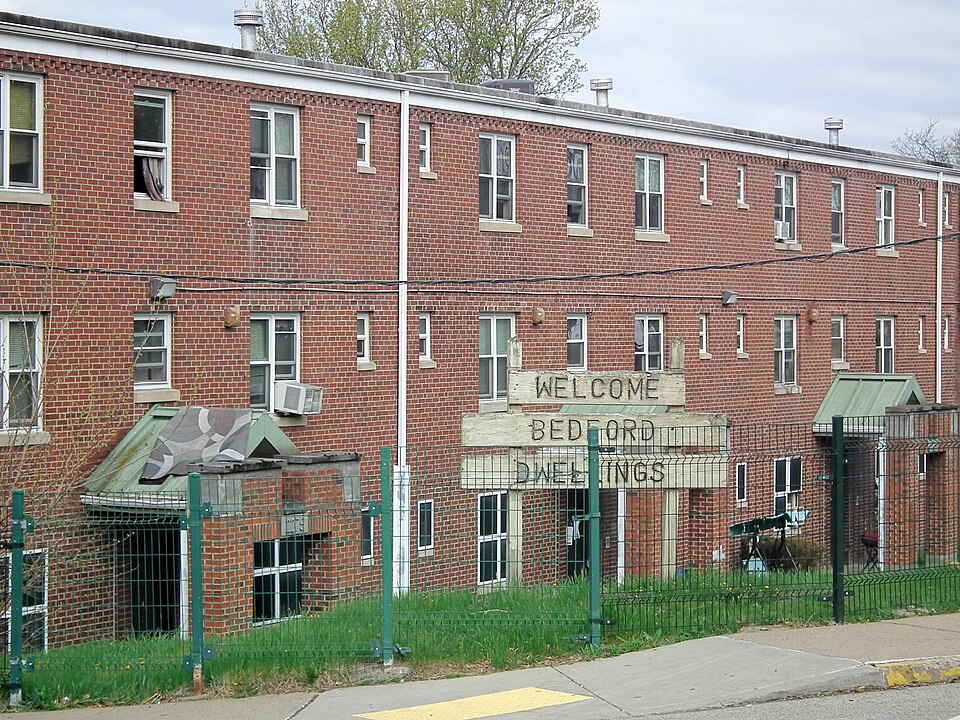
Comments
